Top Agricultural Tools in India for Your Farming Needs
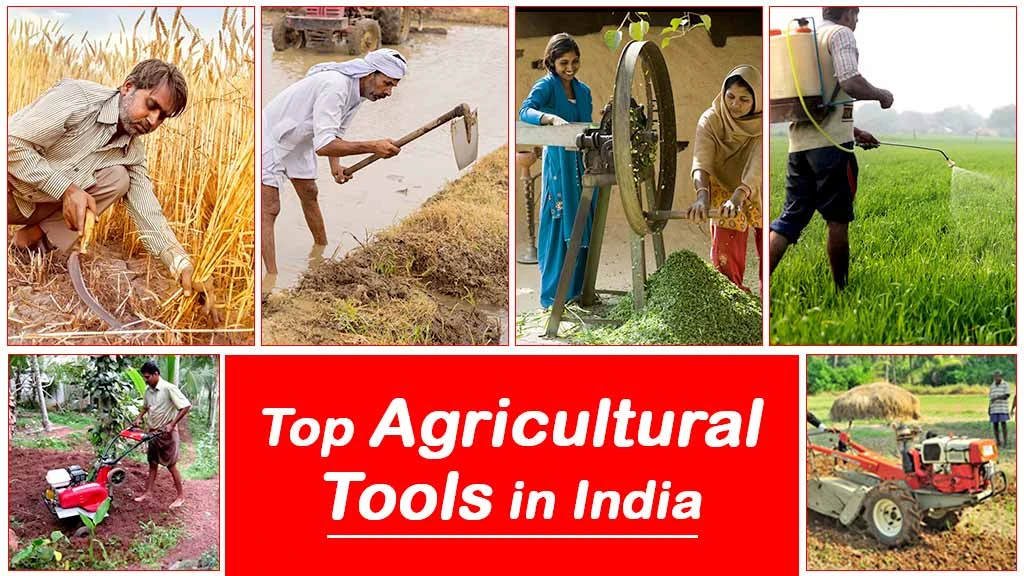
Agricultural tools made farmers lives easy as all farmers' primary objective is to increase overall agricultural production using limited resources. These tools play a significant role in ensuring that higher production is achieved with less effort and less time. Today, we will explore a complete list of top agricultural tools used in agriculture.
Table of Contents
- What are Agricultural Tools?
- Need for Agricultural Tools in a Farmer’s Life
- What are the Top Agricultural Tools in India?
- Other Agricultural Tools Used in India
What are Agricultural Tools?
Agricultural tools are farming instruments that help in carrying out a variety of farm tasks efficiently. They can be manually operated or powered using a machine. Agricultural tools play a significant role in ensuring that with less effort and less time, higher production is achieved. They have empowered farmers to improve their productivity and profitability.
Need for Agricultural Tools in a Farmer’s Life
- Agricultural tools make the overall farming process easy by speed up the process which increases efficiency and productivity.
- These tools help reduce manual effort and ensure optimal resource management.
- Farmers can use these agricultural tools to cover bigger amounts of ground which help in the precise application of seed sowing, fertilizer and pesticides and harvest crops more quickly.
What are the Top Agricultural Tools in India?
With a wide range of farming tools available to choose from, it is necessary to understand their particular use. Check out the following agriculture tools below:
Sickle
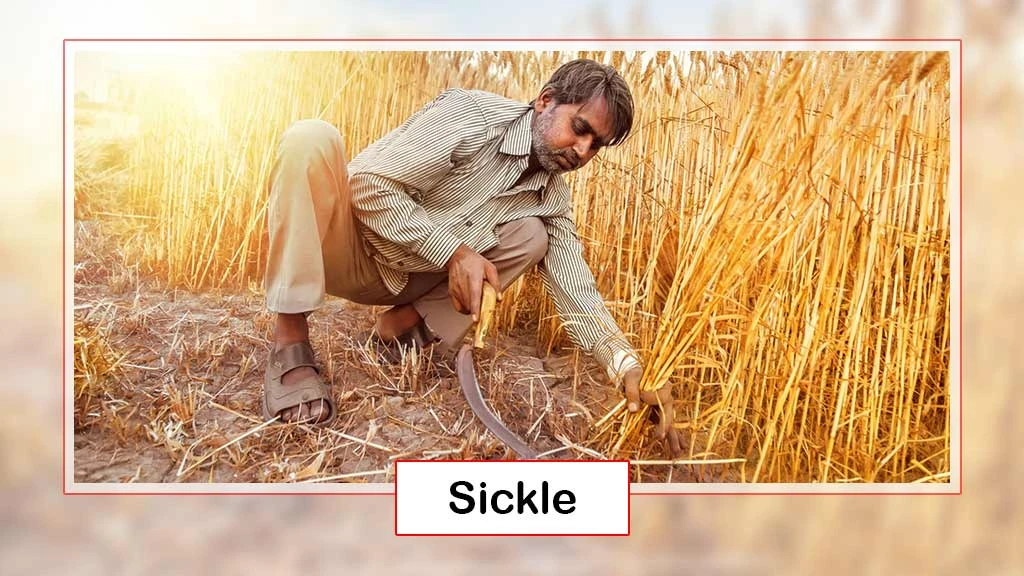
A sickle is a common agricultural tool which is half-round with a curved steel-edged blade and a handle to hold it at one end. The blade can be hardened and fabricated with carbon steel for wear resistance. It is a hand-held farming tool used to cut crops. Due to its ease of use, it is also used to harvest vegetables, cut grass and cereal crops.
Pickaxe

A pickaxe is a T-shaped tool held by hand for prying purposes. It is also known as also known as “pick”. The head part of this tool is usually made of metal, and a perpendicular handle is attached to it. This handle is usually made of wood but can also be made of different materials. This tool is used for prying or breaking the soil. The other side is used for digging holes or chopping through the roots. It is also used to make space in soil to plant trees or shrubs.
Spade

A spade has a flat shape with sharp edges. It mostly comes with a rectangular blade. Spade is used to break the ground or the tree roots remaining in the soil and lift soil, gravel and cattle dung in dairy farming. It is also used to remove grass and excavate the garden beds.
Brush Cutter
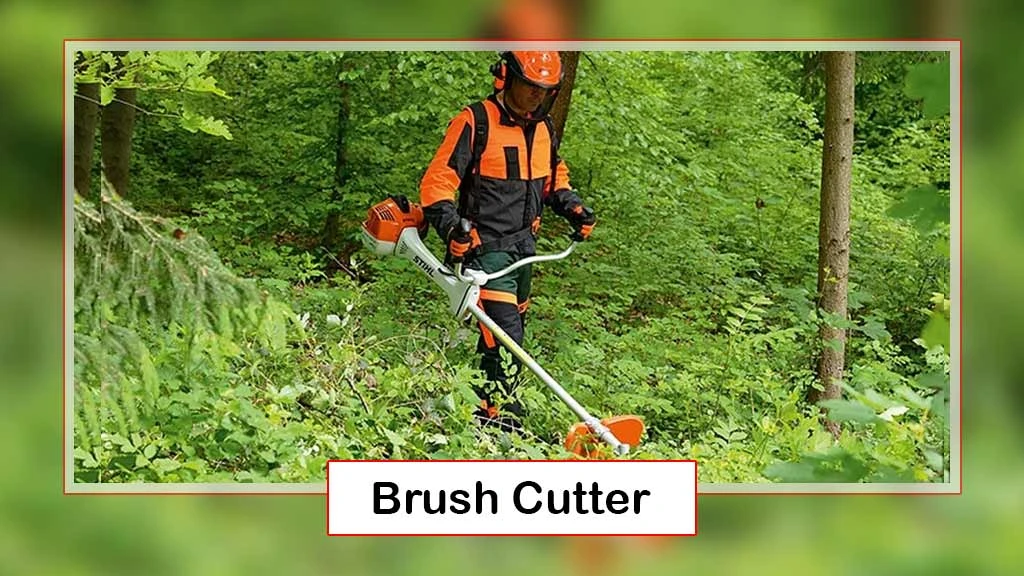
A brush cutter is a powerful tool which is used to trim or remove grass, bushes, and weeds from the field. The tool has two types of blades: one has two nylon wires to cut the grass and weeds, and another one has sharp metal blades to cut the unwanted vegetation or plant stems. Brush Cutter helps make the field look clean by removing the unwanted grass. It is also used to cut crops like maize, jowar, paddy, and wheat, etc.
Chaff Cutter

Chaff cutters or chaff shredders are commonly used to cut or shred straw, hay, or other plant materials into smaller pieces, known as chaff. They can be manually operated or powered by a machine. This device is mostly used to prepare animal fodder. It is user-friendly and requires low maintenance. It helps save farmer’s time by reducing the time spent cutting the animal fodder.
Knapsack Sprayer
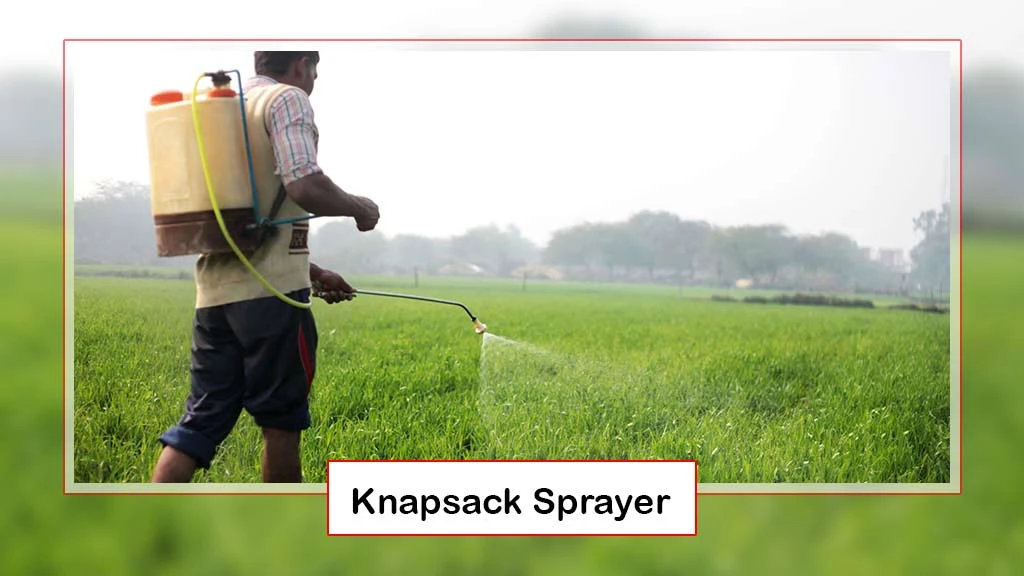
A Knapsack sprayer comprises an air chamber and a pump installed in a tank. It is a manual sprayer carried on the operator’s back, making pumping with one hand and spraying with another possible. The continuous operations of the pump can help maintain uniform pressure. Knapsack sprayers with electric pumps have recently become popular as they eliminate the need for constant manual pumping. They are mostly used to spray fertilizers, herbicides, etc.
Power Tiller
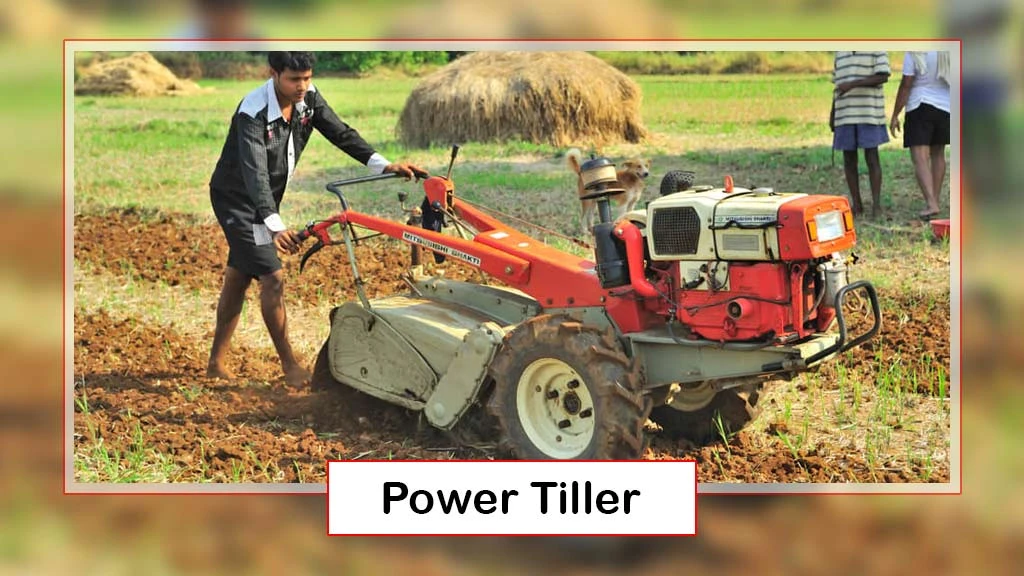
This is a versatile agricultural tool used for cultivation and land preparation. It is a compact tractor-like machine with an engine capable of ploughing the soil. Power tiller is used in areas where tractor operations are not possible, such as hilly areas or where the farming land is small. It prepares the seedbed by levelling the ground and preparing a uniform seedbed. It is primarily used for puddling in rice cultivation. It is also used for tillage, ploughing, and weeding.
Power Weeder
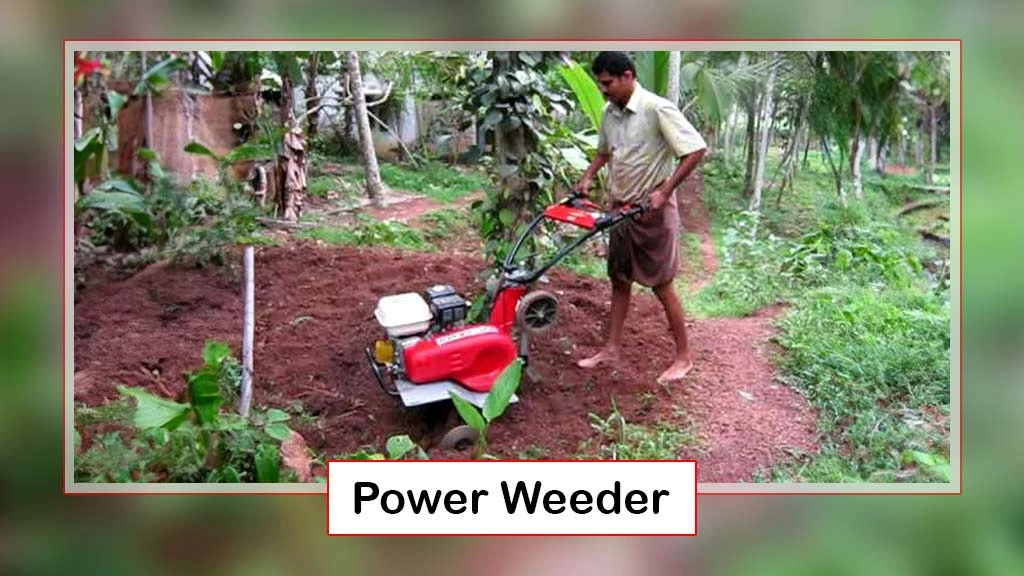
Power Weeder is used to remove weed which helps in the crop growth and better soil health. The tool has tynes that remove the weeds by pulverising and loosening the soil. It is an important tool for de-weeding in sugarcane plantations, coconut farms, horticulture, vegetables, etc.
Power Reaper
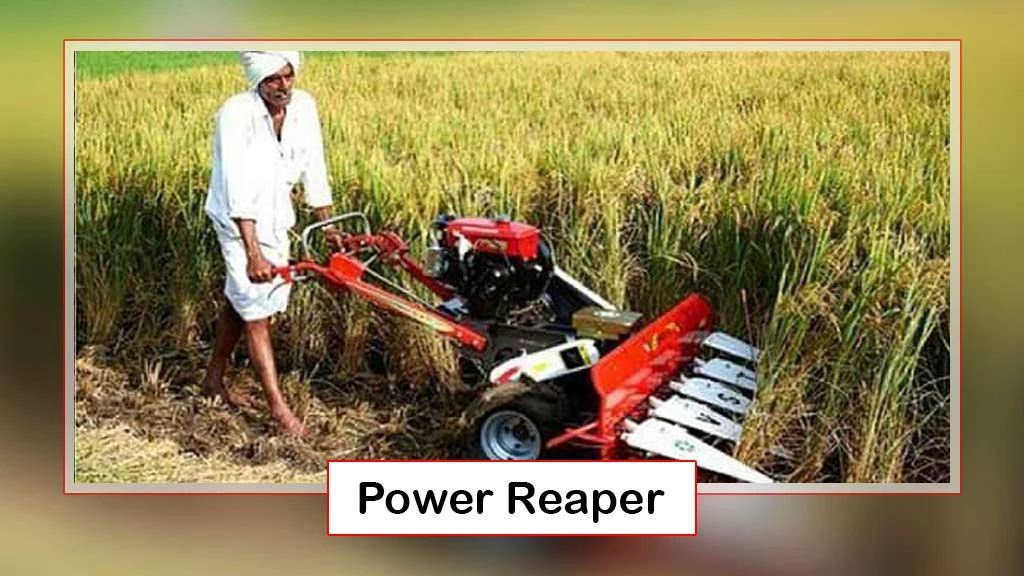
A power reaper is a machine used to harvest the crops. It is suitable for diverse crops like wheat, mustard, paddy and others. This tool is simple to use, cost-effective and saves time. It also saves labour costs by increasing productivity. This compact machine is easily accessible to marginal farmers and farmers with small farming land.
Other Agricultural Tools Used in India

- Pruning Saw: It is an agricultural tool with teeth-like structure, used to trim or shape trees and shrubs. It is best suited for thick branches.
- Axe: Axe is used to cut thick substances such as wood. It easily cuts small trees, shrubs, or thick undergrowth.
- Rake: Rake has teeth or tynes at one side and is used to collect leaves, grass and other debris from the ground.
- Machete: Machete has a strong handle and a sharp steel blade. It is mostly used in harvesting crops as it can easily cut crops like sugarcane, bananas, etc.
- Watering Can: Watering cans are used for the precise watering in the gardens and small farms.
To summarise, farming has become convenient due to the use of different agricultural tools. Managing farms become easy with the use of these tools. These tools are highly significant for farmers, as discussed in the blog, as they improve the overall farming experience of the farmers, making them popular agriculture tools that farmers can have at their disposal.
Frequently Asked Questions On Top Agricultural Tools in India for Your Farming Needs
1. What is the meaning of agriculture tool?
Agriculture tools refer to equipment that assists farmers by reducing their efforts on farms.
2. What are the top 5 tools that farmers use in farming?
The top 5 tools that farmers use in farming are the Sickle, Pickaxe, Spade, Brush Cutter, and Sprayer.
3. What are the modern tools used in agriculture?
Power Tillers, Power Weeder, and Power Reaper are some of the modern tools used in agriculture.
4. What are handheld tools in agriculture?
Hand tools in agriculture refer to tools that can be used manually by hand and do not require an engine for operations.
5. What is the importance of agriculture tools in India?
These tools reduce the overall efforts of the farmers and help improve productivity. These are also useful in case of labour shortage or when tractors cannot be used due to small farms or farms being in hilly areas.
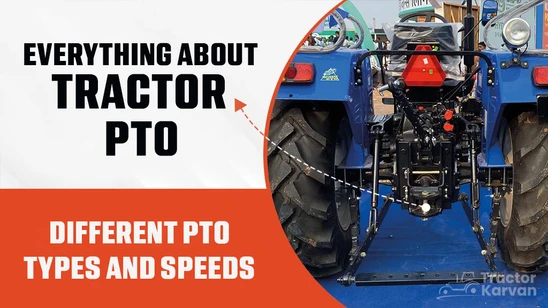

Related Blogs















